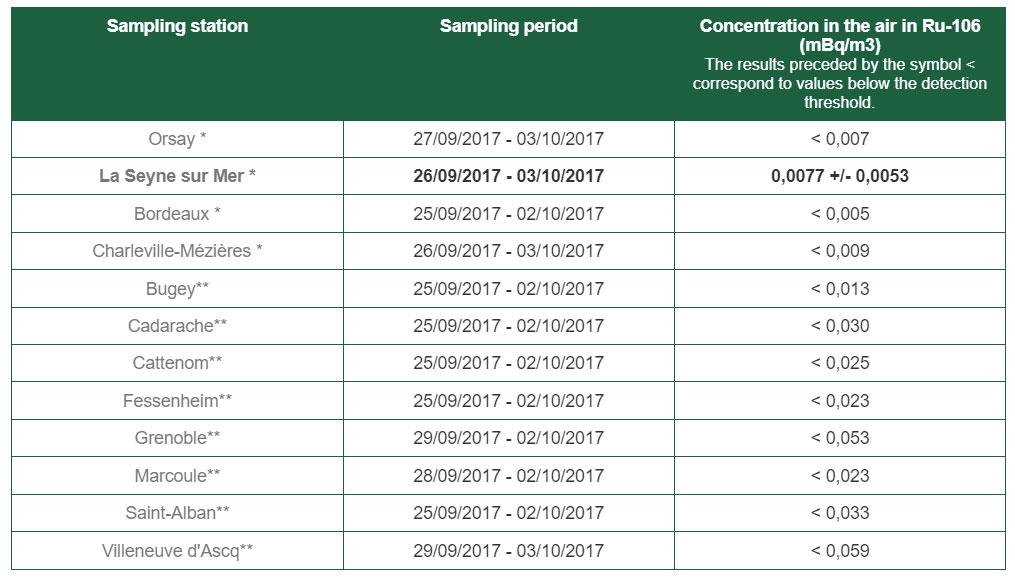Detection of ruthenium-106 in the air in the east and south-east parts of Europe - Update of October 6, 2017 at 8pm
Ruthenium-106 has been detected by several European networks involved in the monitoring of atmospheric radioactive contamination, at levels of a few milliBecquerels per cubic meter of air.
Ruthenium-106 is a radionuclide of artificial origin. It is a fission product from the nuclear industry. This radionuclide is also used in the medical field for brachytherapy treatments
So far, IRSN calculations, based on the concentration levels measured in several European countries and on the meteorological conditions of the last few days, seem to indicate that the contamination air could have been generated from southern regions of Ural or located close to those. IRSN is continuing its investigations to try to confirm the origin of this atmospheric pollution.
As a reminder, in France, only the station of Seyne-sur-Mer (Var) shows the presence of ruthenium-106 at trace levels (7.7 micro-Bq/m3). The results of measurement of the filters of the other stations of IRSN do not show the presence of this radionuclide. All the measurement results are shown in the table below.
The low levels of atmospheric contamination of ruthenium-106 observed to date by European monitoring networks have no environmental or health consequences. Nevertheless, IRSN maintains a watchful vigilance on this presence of ruthenium in the air.
Detection of RU-106 in Europe: Update of measurement results at IRSN's stations as of October 5, 2017

* Stations located in the localities marked with an asterisk have very high air filtration flows (up to 700 m3/ h) dedicated to the detection of traces.
** Stations located in localities marked with two asterisks have air filtration rates of 80 m3 / h.
